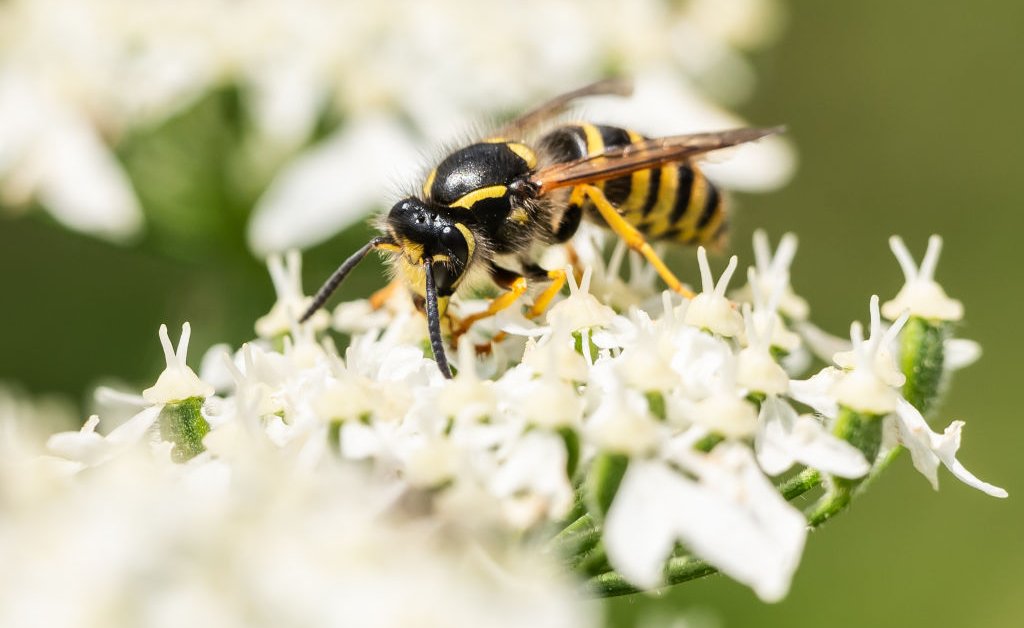Understanding The Link Between Climate Change And Summertime Insects

Welcome to your ultimate source for breaking news, trending updates, and in-depth stories from around the world. Whether it's politics, technology, entertainment, sports, or lifestyle, we bring you real-time updates that keep you informed and ahead of the curve.
Our team works tirelessly to ensure you never miss a moment. From the latest developments in global events to the most talked-about topics on social media, our news platform is designed to deliver accurate and timely information, all in one place.
Stay in the know and join thousands of readers who trust us for reliable, up-to-date content. Explore our expertly curated articles and dive deeper into the stories that matter to you. Visit Best Website now and be part of the conversation. Don't miss out on the headlines that shape our world!
Table of Contents
The Buzz About Climate Change: Understanding the Link Between Rising Temperatures and Summertime Insects
Summertime often brings the familiar buzz of insects – bees diligently pollinating, butterflies flitting through gardens, and the occasional mosquito bite. But the symphony of summer sounds might be changing, and climate change is playing a significant role. The relationship between a warming planet and our insect populations is complex, impacting everything from biodiversity to agriculture. This article delves into the key ways climate change is affecting summertime insects, exploring both the challenges and the potential consequences.
How Climate Change Impacts Insect Populations
Climate change isn't just about rising temperatures; it's a cascade of interconnected effects impacting insect life cycles and habitats. Several key mechanisms are at play:
-
Shifts in Geographic Range: As temperatures rise, insect species are migrating to higher altitudes and latitudes in search of suitable climates. This can lead to range expansions for some species but range contractions and even local extinctions for others. This shift also disrupts established ecological relationships and can impact local ecosystems.
-
Altered Phenology: Phenology refers to the timing of seasonal life cycle events, such as egg laying, pupation, and emergence. Climate change is disrupting these timings, leading to mismatches between insects and their food sources or predators. For example, if a butterfly emerges before its host plant has leaves, the butterfly larvae will starve.
-
Increased Frequency and Intensity of Extreme Weather Events: Heatwaves, droughts, and floods can decimate insect populations, particularly those less resilient to such events. These events can also alter habitats, making them less suitable for certain species.
-
Changes in Insect Physiology and Behavior: Rising temperatures can directly affect insect physiology, impacting their metabolic rates, development times, and reproductive success. Changes in behavior, such as altered foraging patterns or increased vulnerability to diseases, can also be observed.
The Ripple Effect: Consequences of Changing Insect Populations
The consequences of these changes extend far beyond the insect world itself:
-
Impacts on Pollination: Many insects are crucial pollinators for crops and wild plants. Changes in insect populations can directly affect crop yields and the health of ecosystems. The decline in bee populations, for example, is a major concern for global food security. [Link to article about bee decline]
-
Disruptions to Food Webs: Insects form the base of many food webs, serving as a vital food source for birds, amphibians, reptiles, and other animals. Changes in insect populations can have cascading effects throughout the entire ecosystem.
-
Increased Disease Transmission: Some insect species, such as mosquitoes, are vectors for diseases like malaria and Zika virus. Changes in their distribution and abundance can increase the risk of these diseases spreading to new areas.
-
Agricultural Impacts: Changes in pest insect populations can lead to increased crop damage and require increased use of pesticides, further impacting the environment.
What Can We Do?
Addressing the impact of climate change on insect populations requires a multifaceted approach:
-
Mitigation of Climate Change: Reducing greenhouse gas emissions is crucial to slowing the pace of climate change and mitigating its impacts on insects and ecosystems.
-
Habitat Conservation and Restoration: Protecting and restoring insect habitats is essential for providing refuges and promoting biodiversity.
-
Sustainable Agricultural Practices: Reducing pesticide use and promoting biodiversity-friendly agricultural practices can help protect beneficial insect populations.
-
Further Research: More research is needed to understand the complex interactions between climate change and insect populations, and to develop effective strategies for conservation and management.
The buzzing of summer insects is more than just background noise; it's an indicator of a healthy ecosystem. By understanding the link between climate change and insect populations, and taking proactive steps to address the challenges, we can help ensure a vibrant and diverse insect world for future generations. Let's work together to protect these vital creatures and the ecosystems they support.

Thank you for visiting our website, your trusted source for the latest updates and in-depth coverage on Understanding The Link Between Climate Change And Summertime Insects. We're committed to keeping you informed with timely and accurate information to meet your curiosity and needs.
If you have any questions, suggestions, or feedback, we'd love to hear from you. Your insights are valuable to us and help us improve to serve you better. Feel free to reach out through our contact page.
Don't forget to bookmark our website and check back regularly for the latest headlines and trending topics. See you next time, and thank you for being part of our growing community!
Featured Posts
-
 New Action Movie Tin Soldier De Niro Eastwood Vs Foxxs Cult In Epic Showdown
May 27, 2025
New Action Movie Tin Soldier De Niro Eastwood Vs Foxxs Cult In Epic Showdown
May 27, 2025 -
 Burrows Schedule Gripe Nfl Acknowledges Potential Adjustments
May 27, 2025
Burrows Schedule Gripe Nfl Acknowledges Potential Adjustments
May 27, 2025 -
 Brazils Finance Chief On Climate Action Economic Benefits And Strategic Investments
May 27, 2025
Brazils Finance Chief On Climate Action Economic Benefits And Strategic Investments
May 27, 2025 -
 Haddad Maia 23 Vs Baptiste 70 2025 Roland Garros Match Analysis
May 27, 2025
Haddad Maia 23 Vs Baptiste 70 2025 Roland Garros Match Analysis
May 27, 2025 -
 The George Floyd Killing Five Years Later Where Does America Stand On Racial Justice
May 27, 2025
The George Floyd Killing Five Years Later Where Does America Stand On Racial Justice
May 27, 2025
